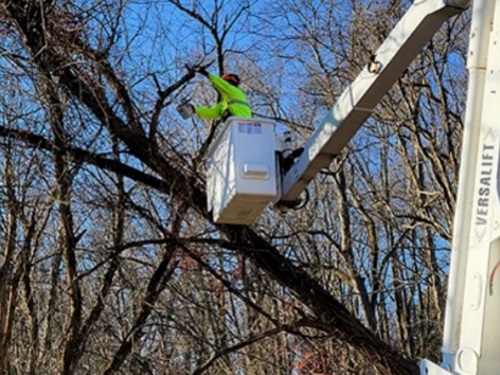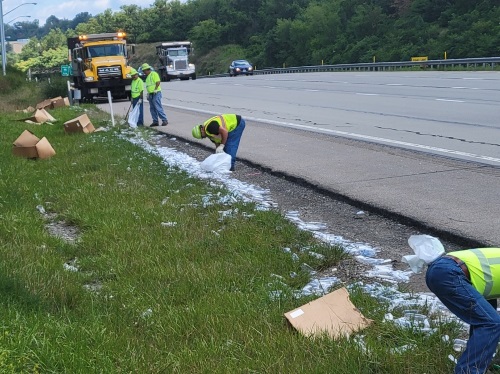FEDERAL ACTION
AASHTO Names PennDOT’s Gramian as CES Chair – AASHTO Journal
FTA Awards $409M in Transit Bus Grants – AASHTO Journal
House Lawmakers Pitch Water Infrastructure Projects – Transport Topics
SEC plans to force public companies to disclose greenhouse gas emissions – Washington Post
FHWA Announces First Availability of National Scenic Byways Program Funding Since 2012 – FHWA (Media release)
COVID-19
Portland Transportation Leaders Move to Make COVID-Era Street Seating Permanent – Portland Mercury
How did COVID-19 impact mass, micro-transit options? – KXAN-TV
CDC lowers COVID-19 warning on cruise ships from ‘high’ to ‘moderate’ – The Hill
NEPA
Utah Lake Restoration Project must complete Environmental Impact Statement – Daily Herald
INFRASTRUCTURE RESILIENCE AND SUSTAINABILITY
Colorado is about to rapidly expand its transmission network. Should it double as a bike highway system? – Colorado Public Radio
Pittsburgh City Council proposal would turn to nonprofits for infrastructure funding – Tribune-Review
It’s Time to Treat E-Bikes Like Vehicles – CityLab
Major New Roads In England May Have Funding Pulled If They Increase Carbon Emissions Or Don’t Boost Active Travel – Forbes
AIR QUALITY
AVTA now operates North America’s first fully zero-emissions fleet – Mass Transit
EPA plan would limit downwind pollution from power plants – Los Angeles Times
The promises – and limits – of electric vehicles – WDET Radio
ENVIRONMENTAL JUSTICE
Pennsylvania is revising its environmental justice policy. Here’s what’s changing – Allegheny Front
Even many decades later, redlined areas see higher levels of air pollution – WBEZ Radio
Clean water is key to conservation equity – The Hill (Opinion)
Biden’s push for an infrastructure presidency risks sacrificing Black communities – Washington Post (Commentary)
NATURAL RESOURCES
Claim your roadkill with 511 app – GCN
No Kidding: Goats as Vegetation Management in Bedford? – Katonah Lewisboro Times
Climate-driven water woes spark Colorado rush to conserve ‘liquid gold’ – Reuters
Report: Clean Water Act Falls Short – Progressive Farmer
Corps releases West Shore Lake Pontchartrain environmental documents for review – Army Corps of Engineers (Media release)
CULTURAL RESOURCES
Manhattan’s Chinese Street Signs Are Disappearing – New York Times
HEALTH AND HUMAN ENVIRONMENT/ACTIVE TRANSPORTATION
State of Michigan Announces Grants for Electrified Mobility Projects – Autobody News
Brightline launches bike-share program, ‘BrightBike,’ to encourage more eco-friendly transportation – WPBF-TV
Gov. Justice approves pedestrian improvements in Morgantown – WBOY-TV
Chicago Facing Class Action Suit Over Lack Of Accessible Signals For Blind Pedestrians – WTTW-TV
New York City DOT To Install 500 Accessible Pedestrian Signals At Intersections Next Year – Gothamist
TRB RESOURCES/ANNOUNCEMENTS
Clearing the Skies with Research on Electric Vehicles – TRB
TRB Webinar: Creating Inclusive Mobility – TRB
FEDERAL REGISTER NOTICES
Notice of Availability of Initial Guidance Proposals for the Capital Investment Grants Program – FTA (Notice)
Air Travel by Persons Who Use Wheelchairs; Notice of Public Meeting – USDOT, Office of the Secretary (Notice)
Carbon Capture, Utilization, and Sequestration Guidance – Council on Environmental
Quality (Notice of availability; request for comments; extension of comment period)
Notice of Rail Energy Transportation Advisory Committee Meeting – Surface Transportation Board (Notice of meeting)
National Priorities List – EPA (Proposed rule; withdrawal of proposed rule)
Approval of Arizona Air Plan Revisions, Arizona Department of Environmental Quality and Maricopa County Air Quality Department – EPA (Final rule)
Proposed Settlement Agreement, Clean Air Act Citizen Suit – EPA (Notice; request for public comment)
Proposed Settlement Agreement, Clean Water Act – EPA (Notice of proposed settlement agreement; request for public comment)
Notification of a Public Meeting of the Clean Air Scientific Advisory Committee (CASAC) Lead Review Panel – EPA (Notice)
National and Governmental Advisory Committees to the U.S. Representative to the Commission for Environmental Cooperation (CEC) – EPA (Notice of meeting)
Inland Waterways Users Board Meeting Notice – Army Corps of Engineers (Notice)
Notice of Availability of the Deepwater Horizon Oil Spill Louisiana Trustee Implementation Group Draft Restoration Plan/Environmental Assessment #8: Wetlands, Coastal, and Nearshore Habitats – National Marine Fisheries Service (Notice of availability; request for comments)
National Oceanic and Atmospheric Administration Sanctuary System Business Advisory Council: Public Meeting – NOAA (Notice)
Final Programmatic Environmental Impact Statement Waterways Commerce Cutter Acquisition Program – Coast Guard (Notice of availability; request for comments)
Reconciliation of Derogatory Geographic Names Tribal Consultation; Correction – U.S. Geological Survey (Notice; correction)


